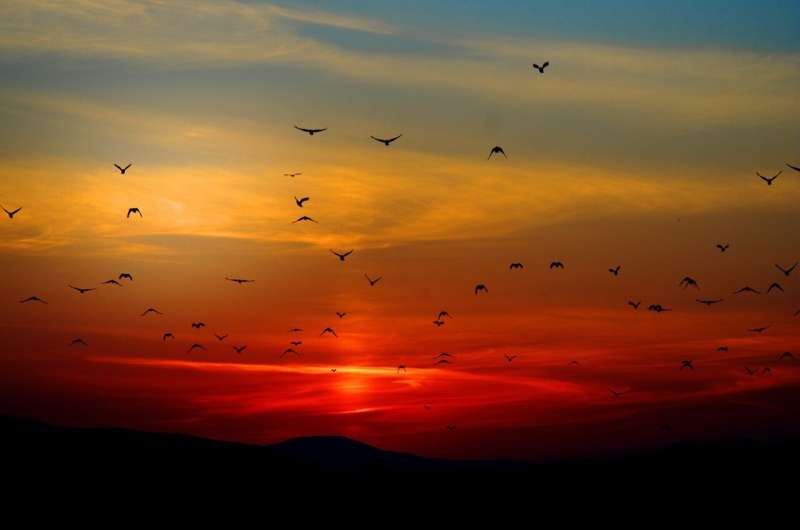This article has been reviewed according to Science X's editorial process and policies. Editors have highlighted the following attributes while ensuring the content's credibility:
fact-checked
peer-reviewed publication
proofread
Study shows obstacles slow down birds as they shift ranges in response to global warming

Two-thirds of Europe's birds have moved to cooler areas over the last 30 years, mainly to the north and east by 100 kilometers on average. They are trying to find the conditions they are best suited to under global warming. But these journeys come up against obstacles such as mountain ranges and oceans. This has been observed by scientists in a study recently published in the journal PNAS.
In this study of almost all European bird species, the scientists looked at the effects of large-scale natural barriers, such as mountain ranges and coastlines, on the movements of birds over the last 30 years. They have established that these barriers affect both the distance and direction traveled by the birds.
"Over the observation period, bird communities moved farther when they lived far from the coast than when they lived close by," explains Laura Bosco, a researcher at the University of Helsinki and author of the study. Coastlines therefore act as real obstacles to the movement of birds, the scientists concluded. "We already knew that the birds and entire communities weren't moving fast enough to track the climatic conditions that normally suit them. We now have part of the explanation for this phenomenon," Laura Bosco adds.
A danger for certain species
These results are important for gaining a better understanding of the possible consequences of climate change on European birdlife. Communities of birds that come up against obstacles risk having to cope with unsuitable climatic conditions without being able to move to more suitable areas. At least some of the species concerned could therefore be threatened with extinction.
"Coastal birdlife is often made up of rare and unique species," Bosco warns. In Switzerland, alpine birds, including species such as the white-winged snowfinch (Montifringilla nivalis), the rock ptarmigan (Lagopus muta) and the water pipit (Anthus spinoletta), which are well-adapted to alpine habitats, could face similar problems due to altitudinal gradients. These birds prefer to stay in the alpine conditions with which they are familiar and could, for example, find themselves blocked by having to face lower altitudes to cross valleys.
More information: Emma-Liina Marjakangas et al, Ecological barriers mediate spatiotemporal shifts of bird communities at a continental scale, Proceedings of the National Academy of Sciences (2023). DOI: 10.1073/pnas.2213330120
Journal information: Proceedings of the National Academy of Sciences
Provided by Schweizerischer Nationalfonds SNF


















